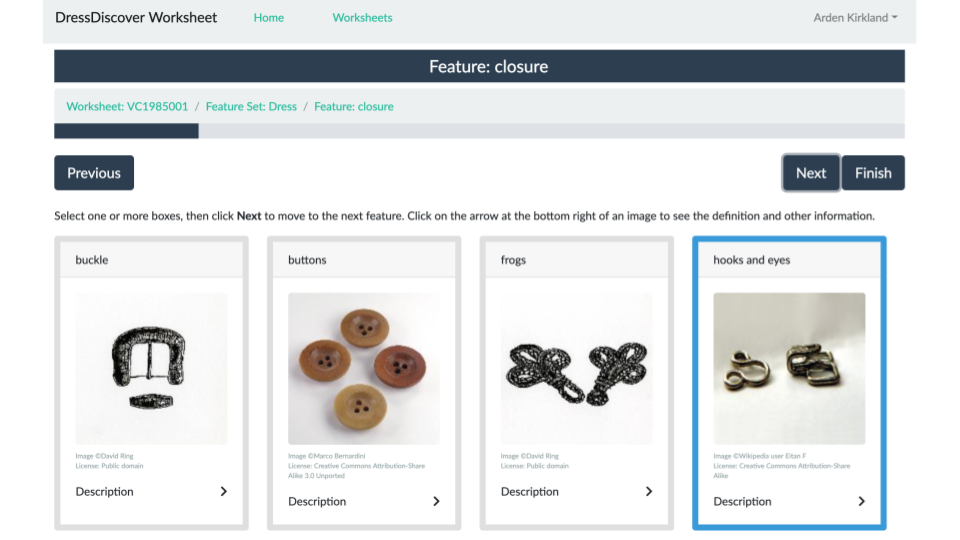
Instead of worrying about the right search term, what if we turn to images to represent concepts instead? If we associate images with terms and synonyms in our controlled vocabularies, we can develop visual workflows for both the description process (catalogers) and the search process (users). Many kinds of artifacts in our collections would benefit from this approach.
This project grew out of work on HistoricDress.org, where a multi-disciplinary, multi-institutional team outlined significant barriers preventing students and other public users from engaging with digital collections of fine and decorative arts. The question that emerged was “How can we help users who don’t know the ‘proper’ vocabulary to search for examples of art?” The team identified a major disconnect between the way decorative art objects are described and organized in digital collections versus the way that users seek to find and engage with them.
I have consulted with professionals in a variety of museums, universities, art schools, and private collections to collect existing controlled vocabulary terms related to historic clothing, collect datasets from existing collections to compare uncontrolled terms in current use, and identify the differences and similarities in their cataloging and publishing workflows. The application profile CostumeCore (http://www.ardenkirkland.com/costumecore/) has been developed to apply several existing metadata standards and controlled vocabularies to historic fashion. It builds on structural elements from both Dublin Core and VRA Core and uses vocabulary from both the AAT and Europeana Fashion Thesaurus.
The feature groupings in CostumeCore, used in the worksheet app, follow up on Marcia Zeng’s work with “micro thesauri,” taking thesauri such as the AAT that are available as Linked Data and breaking them into smaller groupings to make them usable for those who aren’t subject experts. Paper prototypes were tested with students at Vassar College, recorded manually in a worksheet while going through the workflow with grids of images on pages in a binder instead of the proposed screens of thumbnail images.
The digital prototype worksheet has been implemented as a single-page web application. A student employee from the costume collection at Smith College helped to collect openly-licensed images for this prototype.
See this project as a work-in-progress at: https://worksheet.dressdiscover.org/





